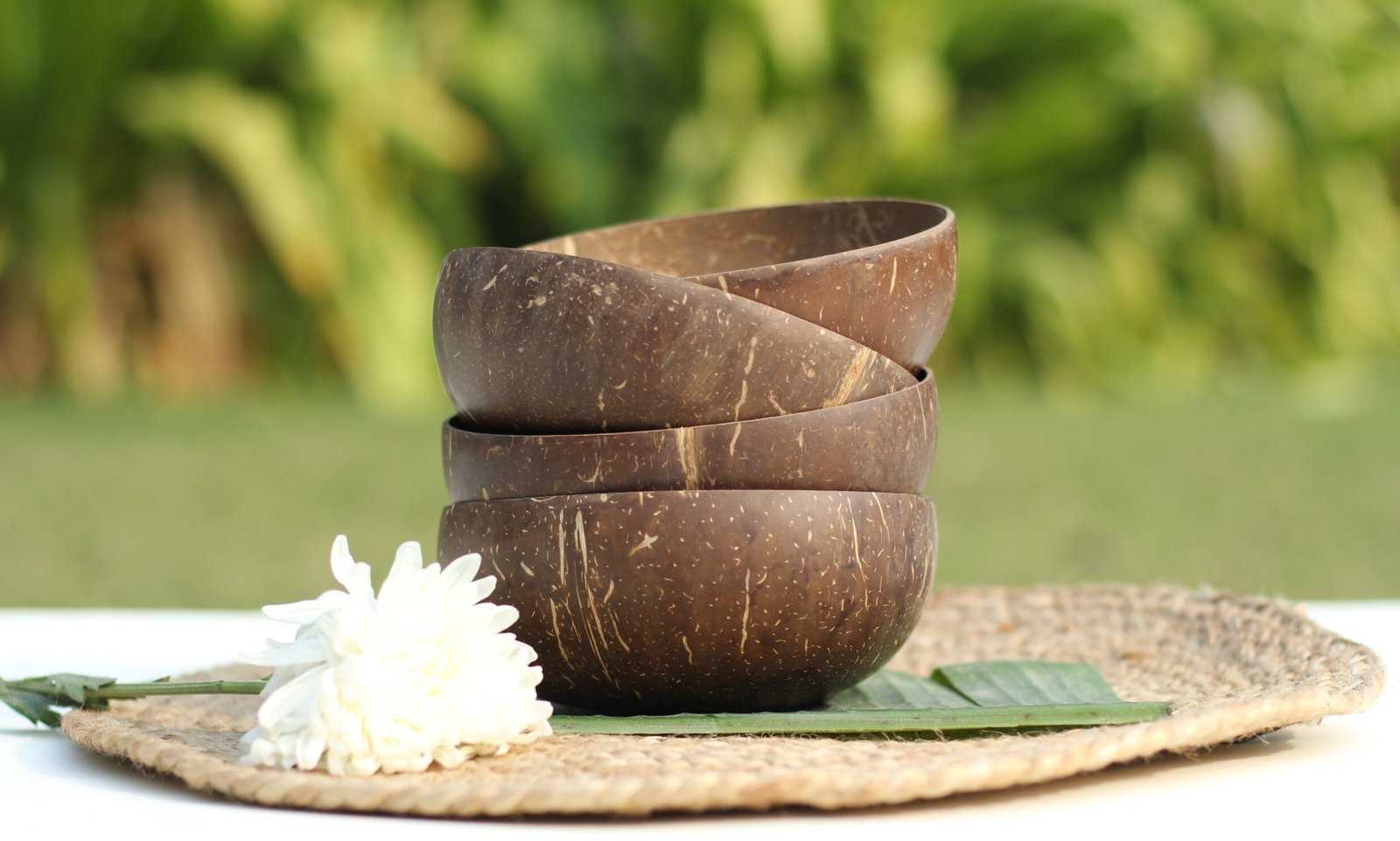Environment, People, Sustainability
How are coconut bowls made?
The creation of coconut bowls
Since our childhood, most of us have had coconut water on a hot summer day. But have we ever stopped to think about what happens to the shells after all the coconut meat is extracted from them? These are either seen in a pile of garbage or are burnt to ashes. 99% of coconut shells are discarded.
How can we prevent that from happening? One option is to make sure that the discarded shells are collected and reused. One of the best ways to reuse these shells is to craft them into some sustainable and beautiful coconut bowls, combined with the skills of local artisans.
Do you know the recipe behind your coconut bowl? Let’s take you through this journey:
Sorting
The coconut shells are first sorted according to their size, density, and color.
Chipping
The insides of the coconut are then chipped off and separated from any remaining meat.
Sanding
The bowls are sanded from the outside to the inside until it is smooth all over.
Polishing
The bowls are then polished with organic virgin coconut oil from the local sources to give them a natural shine.
That’s it, and the chemical-free, organic coconut bowls are ready to be used in all possible ways!
Here are important tips to make your bowl last for longer.
The coconut shells have been designed to hold cold and room-temperature food. So it is advisable to not put hot food into it.
Wash them with lukewarm water, a little bit of soap, and a soft dishcloth.
Polish the bowl with a few drops of coconut oil if it tends to lose its shine with time and use. https://simplealternatives.com/
These coco bowls support the environment, local artisans and add an aesthetic appeal to your kitchen cabinet! It’s the smallest yet the best way to switch to a greener alternative!


